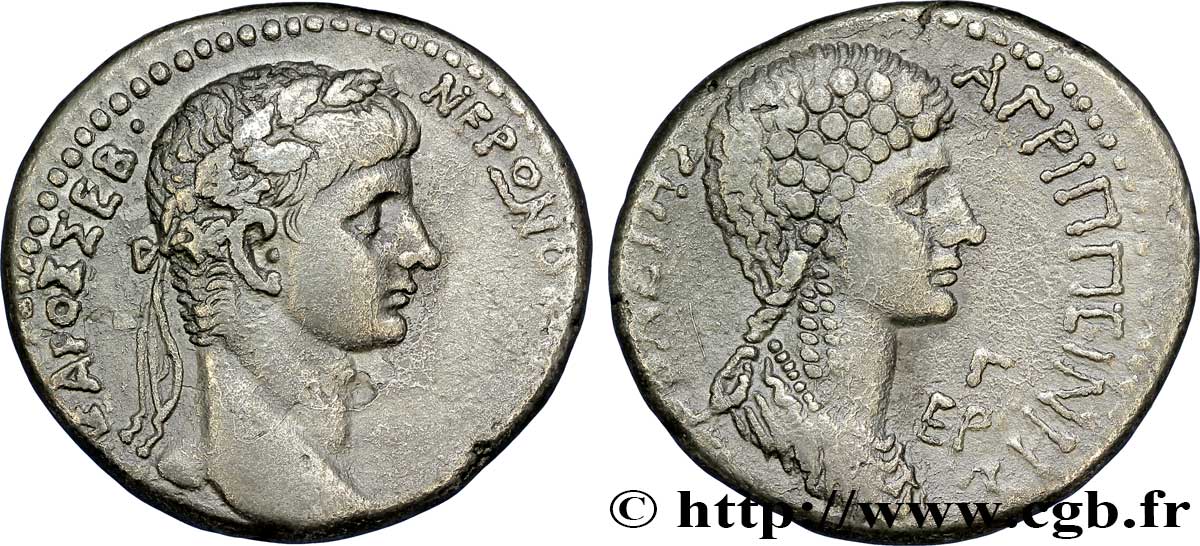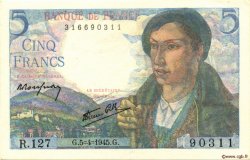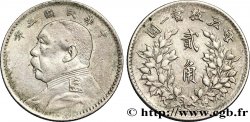bpv_296885 - NERO and AGRIPINA Tétradrachme syro-phénicien
недоступный.
Товар уже продан в нашем интернет-магазине (2014)
Цена: : 1 400.00 €
Товар уже продан в нашем интернет-магазине (2014)
Цена: : 1 400.00 €
Тип Tétradrachme syro-phénicien
Дата: 56-57
Монетный двор / Город: Antioche, Syrie, Séleucie et Piérie
Металл: silver
Диаметр: 26 mm
Ориентация осей монеты: 12 h.
Вес: 13,91 g.
Редкость: R1
Комментарии о состоянии
Flan étroit, comme très souvent dans ces émissions
Ссылки в каталоге: :
Происхождение:
Cet exemplaire est le 0074_059 et il provient de la Collection Richard McAlee
Лицевая сторона
Аверс: описание: Tête laurée de Néron jeune à droite (O*).
Аверс: легенда: NERWNOS KLAUDIOU QEOU UI KAISAROS SEB
Аверс: перевод: (Néron césar auguste fils du divin Claude).
Обратная сторона
Реверс: Описание: Buste drapé et natté d’Agrippine à droite.
Реверс: легенда: AGRIPPEINHS SEBASTHS G ET
Реверс: перевод: (Agrippine auguste - troisième année de règne - An 105 de l’ère césarienne).
Комментарий
Cette émission dynastique inaugurale du règne comprend, outre notre exemplaire à la gloire d’Agrippine et du nouvel empereur, un tétradrachme au revers de Claude, diverses divisionnaires et le premier tétradrachme d’Antioche au revers à l’aigle, type qui deviendra le standard jusqu’à la fin des émissions, sous Trébonien Galle et Uranius Antoninus. Toutes les monnaies de cette série sont très rares à rarissimes et ont certainement été motivées par des donativa et non par les nécessités de la circulation monétaire.
Dans la base TSP maintenue par Michel Prieur, quatre-vingt exemplaires sont maintenant répertoriés ; comme pour le tétradrachme de Cléopâtre et Marc-Antoine, aussi rare, ce type est sur-représenté du fait de la présence du portrait d’Agrippine qui a incité les professionnels à passer la monnaie en vente et à l’illustrer. Parmi ces quatre-vingt exemplaires, on en trouve dix en musées ou collections publiques : Paris, deux exemplaires, Berlin, Yale, British Museum, trois exemplaires, Vienne et Glasgow, deux exemplaires.
This inaugural dynastic issue of the reign includes, in addition to our example to the glory of Agrippina and the new emperor, a tetradrachm with the reverse of Claudius, various divisionaries and the first tetradrachm of Antioch with the reverse of the eagle, a type that would become the standard until the end of the issues, under Trebonianus Gallus and Uranius Antoninus. All the coins in this series are very rare to extremely rare and were certainly motivated by donativa and not by the needs of monetary circulation. In the TSP database maintained by Michel Prieur, eighty examples are now listed; as for the tetradrachm of Cleopatra and Mark Antony, also rare, this type is over-represented due to the presence of the portrait of Agrippina which encouraged professionals to put the coin on sale and to illustrate it. Among these eighty examples, ten are found in museums or public collections: Paris, two examples, Berlin, Yale, British Museum, three examples, Vienna and Glasgow, two examples
Dans la base TSP maintenue par Michel Prieur, quatre-vingt exemplaires sont maintenant répertoriés ; comme pour le tétradrachme de Cléopâtre et Marc-Antoine, aussi rare, ce type est sur-représenté du fait de la présence du portrait d’Agrippine qui a incité les professionnels à passer la monnaie en vente et à l’illustrer. Parmi ces quatre-vingt exemplaires, on en trouve dix en musées ou collections publiques : Paris, deux exemplaires, Berlin, Yale, British Museum, trois exemplaires, Vienne et Glasgow, deux exemplaires.
This inaugural dynastic issue of the reign includes, in addition to our example to the glory of Agrippina and the new emperor, a tetradrachm with the reverse of Claudius, various divisionaries and the first tetradrachm of Antioch with the reverse of the eagle, a type that would become the standard until the end of the issues, under Trebonianus Gallus and Uranius Antoninus. All the coins in this series are very rare to extremely rare and were certainly motivated by donativa and not by the needs of monetary circulation. In the TSP database maintained by Michel Prieur, eighty examples are now listed; as for the tetradrachm of Cleopatra and Mark Antony, also rare, this type is over-represented due to the presence of the portrait of Agrippina which encouraged professionals to put the coin on sale and to illustrate it. Among these eighty examples, ten are found in museums or public collections: Paris, two examples, Berlin, Yale, British Museum, three examples, Vienna and Glasgow, two examples








 Cообщить об ошибке
Cообщить об ошибке Распечатать страницу
Распечатать страницу Отправить мой выбор
Отправить мой выбор Задать вопрос
Задать вопрос Consign / sell
Consign / sell
 Информация
Информация











